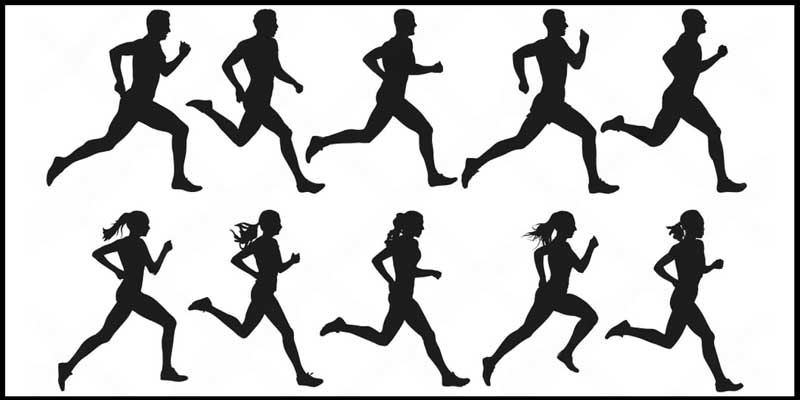Choosing the right running shoes is crucial for both performance and injury prevention. A good pair of running shoes can enhance your comfort, improve your running efficiency, and minimize your risk of developing common running-related issues like shin splints, plantar fasciitis, or knee pain.
Main Findings – How to Find The Right Running Shoes
This comprehensive guide will walk you through the essential steps to finding the perfect running shoes for your individual needs.
1. Understanding Your Foot Type:
The first step in finding the right running shoes is understanding your foot type. This refers to the way your foot strikes the ground during running (pronation). There are three main types of pronation:
- Neutral Pronation: Your foot lands on the outside of the heel and rolls inward slightly (about 15%) to absorb shock. This is considered the most biomechanically efficient foot strike.
- Overpronation: Your foot rolls inward excessively. This can cause instability and increase the risk of injuries.
- Supination (Underpronation): Your foot rolls outward. This is less common than overpronation and can also increase the risk of specific injuries.
How to Determine Your Foot Type:
- The Wet Foot Test: Wet the sole of your foot and step onto a dark surface (like a piece of construction paper). Observe the footprint you leave. A complete, even footprint usually indicates neutral pronation. A wide, flat footprint suggests overpronation. A narrow, curved footprint indicates supination.
- Wear Pattern on Old Shoes: Examine the wear pattern on your current running shoes. Excessive wear on the outer heel suggests supination. Excessive wear on the inner heel suggests overpronation. Even wear across the sole is a sign of neutral pronation.
- Gait Analysis: The most accurate way to determine your foot type is through a gait analysis at a speciality running store. A trained professional will observe you running on a treadmill and analyze your foot strike.
2. Knowing Your Running Style and Terrain:
Consider your running style and the type of terrain you typically run on:
- Road Running: If you primarily run on paved surfaces, you’ll need shoes designed for impact absorption and smooth transitions.
- Trail Running: Trail running requires shoes with more stability, aggressive traction, and protection from rocks and roots.
- Track Running: Track runners often prefer lightweight, flexible shoes that allow for quick movements.
- Racing: For racing, you might opt for lightweight, minimalist shoes designed for speed.
3. Considering Shoe Categories:
Running shoes are generally categorized based on their level of support and cushioning:
- Neutral Shoes: Designed for runners with neutral pronation. They offer cushioning and support without controlling foot motion.
- Stability Shoes: Recommended for runners with mild to moderate overpronation. They provide additional support to control excessive inward rolling.
- Motion Control Shoes: Designed for runners with severe overpronation. They offer maximum support and control.
- Cushioned Shoes: Focus on maximum shock absorption, which is ideal for runners who prioritize comfort and those who run on hard surfaces.
- Minimalist Shoes: Offer minimal cushioning and support, promoting a more natural running style. These are not recommended for beginners and should be transitioned gradually.
4. Understanding Shoe Features:
- Midsole: The midsole is the key component of the shoe that provides cushioning and shock absorption. Look for materials like EVA foam, PU foam, or specialized cushioning technologies.
- Outsole: The outsole is the outer layer of the shoe that provides traction. Consider the tread pattern based on the terrain you run on.
- Upper: The upper is the part of the shoe that covers your foot. Look for breathable materials like mesh.
- Heel Counter: The heel counter provides support and stability for the heel.
5. The Fitting Process:
Shop at a Specialty Running Store: The expertise and gait analysis services offered at speciality stores are invaluable.
Try Shoes On Late in the Day: Your feet tend to swell throughout the day, so trying shoes on later will ensure a more accurate fit.
Wear Running Socks: Wear the same type of socks you would typically run in.
Run in the Shoes: Many stores allow you to run on a treadmill or around the store to test the shoes.
Consider the Width: Don’t just focus on length. Make sure the shoe is wide enough in the toe box to allow your toes to splay naturally.
Leave a Thumb’s Width: There should be approximately a thumb’s width of space between your longest toe and the end of the shoe.
6. Replacing Your Running Shoes:
Running shoes typically last between 300 and 500 miles. Please pay attention to the wear and tear on your shoes and replace them when the cushioning and support start to break down.
7. Don’t Rely on Trends:
Choose shoes based on your individual needs, not just the latest trends or marketing hype.
Bottom Line
Finding the right running shoes is a personal journey. Take your time, do your research, and consult with experts to find the perfect fit for you. Consider your foot type, running style, and terrain. Pay attention to shoe features like cushioning, stability, and fit. Don’t hesitate to visit a specialty running store for expert advice and proper gait analysis. Your feet (and your body) will thank you!
Sources and related content:

